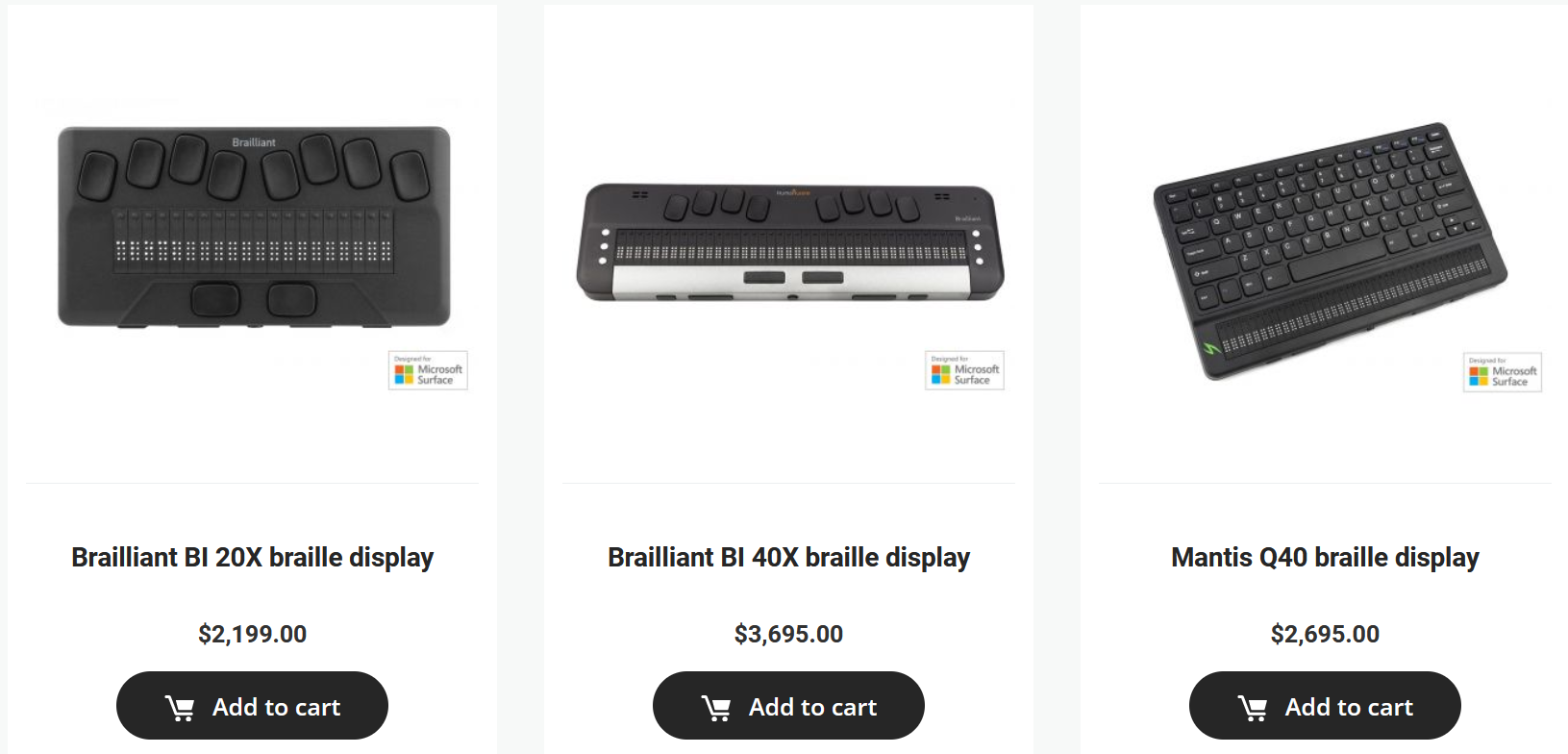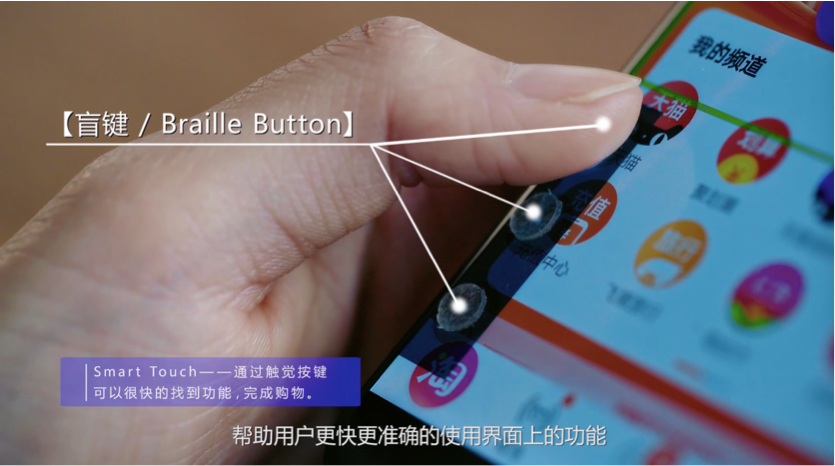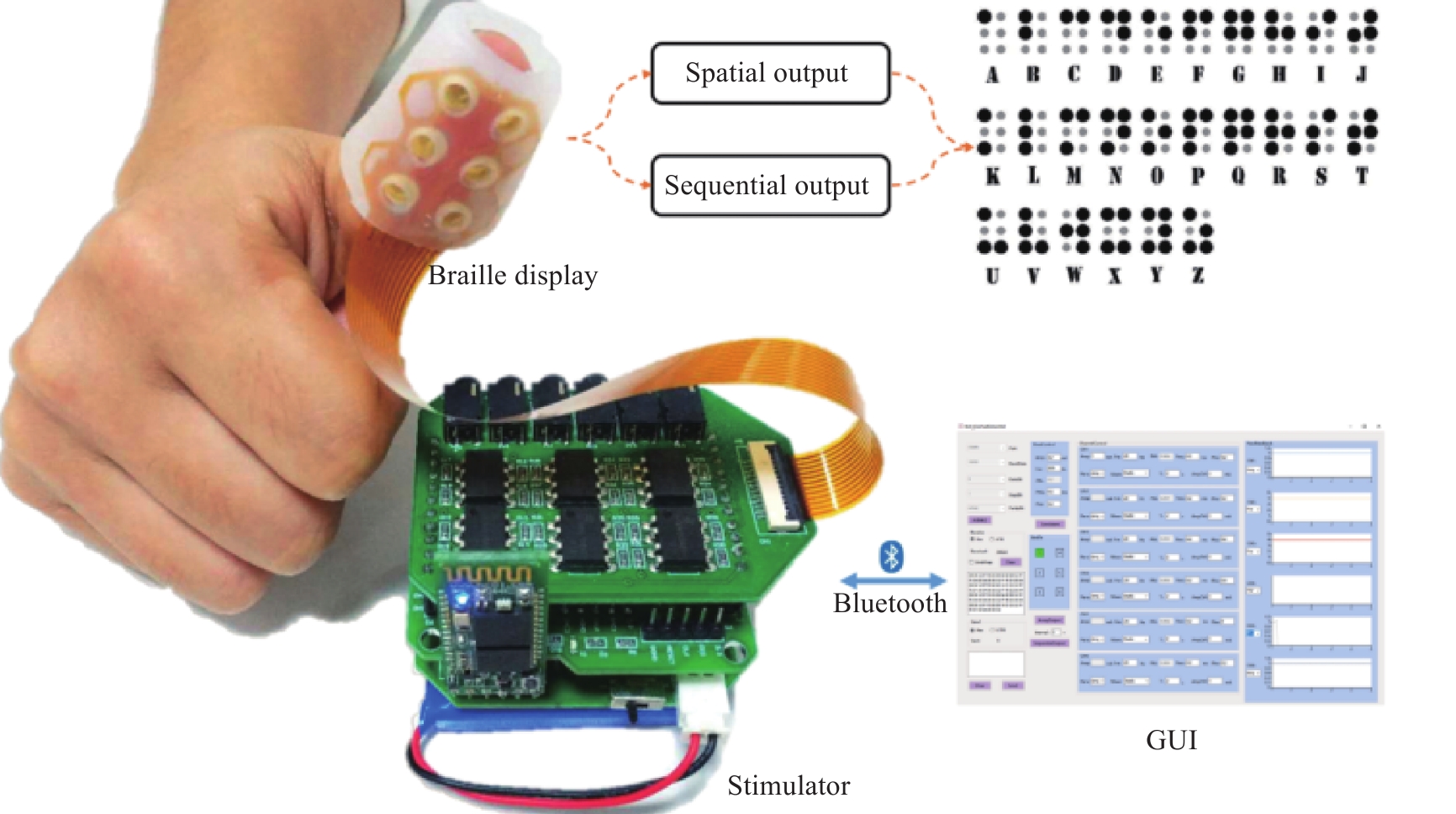Looking over this week's theme for assistive technology, I want to take the time to discuss important issues pertaining to accessibility of smartphone devices. Most, if not all, blind folks are forced to use smartphones using a voice over. During the discussion forum posts, I saw a particular comment suggesting that there should be braille for the smartphone screen, and I could not have agreed more. With visual impairment, your accessibility to digital output is limited to sound, but what if we use the current wonders of technology to implement a more sophisticated touch for the smartscreen. Clever designs from brilliant engineers resulted in the modern touch capabilities that we have for today's touchscreens, so why can't we work those wonders again to develop more accessability? I assume most people are simply complacent with just the touchscreen but still.
Let's take a look at the current market for something that closely resembles what I am talking about. Below is a screenshot for a digital braille reader that morphs the keys to the specific braille based off what's currently shown on screen.

Most of these items are exuberantly expensive, and this is also something that I have been meaning to point out. It's impractical because of its lack of affordability. On the other side, it provides the first peeks into what this technology COULD develop into. After image shopping for a while, I pictured a product in my head that feels like it could work, but needs critic from a real braille-expert.
Below is another picture that illustrates a design derived from Ali-baba for a different application.

My question is - can braille be read with just one finger? Would it be inconvenient to the visually impaired? What this design could do, hypothetically, is provide mimic'ed bumps using an external 'board', small enough to fit on the screen yet still be practical for use. There can be multiple components to the design, such as selecting different text, scrolling through specific parts, but most importantly of all, give the visually impaired a way to read using braille.
 Source
Source
A read more about the "mimic'ed bumps" I mentionned early, and of course it's not as simple as my naive self assumed.
After learning more about what current technologies provide with haptic feedback, it is safe to say that this area of research is untapped potential for anyone with a heart big enough to help the blind. People have been trying to solve this problem of generating braille for a while, so it just takes a brilliant inventor who sees things differently to
create a better, more affordable, way of reading braille from digital displays. I know it can be done, we can build robots now. It can be done.




 Source
Source